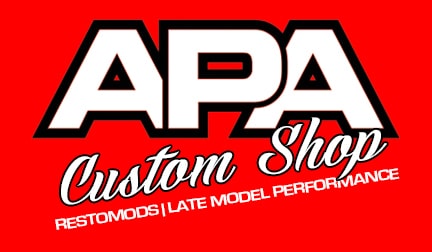Having previously experienced less-than-stellar results with the sadly misunderstood Pontiac GTO and later the Pontiac G8 sedan, two recent Australian-American V-8–powered products that failed to build much excitement at the cash register, GM knew to temper the plan with a dose of consumer reality. While GM initially had high production hopes for multiple times the initial capacity, its estimates were drastically revised once production began. Sales turned out to be consistent if not earth shattering: GM sold 2479 units in 2014, 2895 in 2015, and 3013 in 2016. Ultimately, it was the company’s decision to shutter Holden production altogether, not weak sales, that sealed the SS’s fate. Ordering for the SS concluded at the end of February, with Chevrolet dealers now selling off any remaining stock. Interestingly, Chevy sold 1529 SSs in the first three months of 2017, with 1217 sold in March alone. Apparently, news of the car’s impending demise helped stoke some fires; that and a recent fire sale advertising 20 percent off.
Before the SS forever disappears not so silently into a cloud of tire smoke, we wanted one last fling to load up the memory bank, so we snagged a 2017 SS with a six-speed manual. Little has changed in the car’s four-model-year run. Its centerpiece—the old-school, two-valve-per-cylinder pushrod LS3 V-8—still sends 415 ponies and 415 lb-ft of torque to the rear tires. While the SS launched in 2014 with a six-speed automatic transmission as the sole cog-swapper, the manual came onboard (as a no-cost option) in 2015, as did Chevy’s excellent Magnetic Ride Control adaptive suspension, Brembo brakes in the rear to match the existing fronts, 4G LTE connectivity, and five additional exterior colors. Although its fascia was mildly updated and new 19-inch wheels arrived in 2016, some fans still found the exterior appearance too bland. We kind of dig its clandestine exterior for its authority-avoiding disappear-into-the-flow-of-traffic properties.
One of the SS’s more interesting traits is its high level of standard equipment. In addition to the hardware above, the base price of $48,620 includes a dual-mode exhaust, a limited-slip differential (3.70:1 final drive in the manual versus the automatic’s 3.27:1 ratio), proximity entry and remote start, heated and ventilated power front seats, a leather-wrapped steering wheel and shifter, a head-up display, forward-collision warning, a rearview camera, rear cross-traffic alert, lane-departure warning, blind-spot monitoring, and more. With the SS, you won’t spend hours hemming and hawing over the options sheet. On our test car, the only items adding to the bottom line were the $395 Orange Blast paint, which was bright enough to negate the whole disappear-into-the-flow-of-traffic theory, and a sunroof for $900. The sticker also calls out the $1000 gas-guzzler tax (it’s $1300 with the automatic transmission). All in, the total came to $49,915. If we had the chance to order our own, we’d go with basic black.
While the SS performs well in virtually any driving environment that involves pavement, it excels out on the fringes of civilization, following the undulating and meandering rural lanes that weave between the lakes and farms near our Ann Arbor office. It’s these types of roads that had staffers talking resurrected E39-generation BMW M5. Balance is a word that rarely applied to big Chevrolet sedans in previous decades, but the SS has it. Push the Bridgestone Potenza RE050A summer tires (245/40R-19 front, 275/35R-19 rear) too hard and you feel a hint of understeer, which can be remedied with a gentle stab of the accelerator (stability control is fully defeatable.) Those familiar with the steering of the current Camaro will feel right at home with the electrically assisted setup in the SS—it’s direct and linear but a little devoid of feel and on-center weight. A few drivers complained about nonlinear clutch takeup, but most found it a mild inconvenience and easily trained their left leg accordingly.
In its performance, this SS fell right in line with the numbers posted by its 2015 six-speed predecessor. The zero-to-60-mph run took 4.5 seconds, shaving a tenth off the time of our 2015 example. The quarter-mile was a dead heat, with the 2017 model matching the 13.0 seconds and 111-mph trap speed of the earlier car. Of what used to be referred to as the Big Three, only Chrysler offers V-8–powered, rear-drive sedans that play in the same league as the SS. The Dodge Charger R/T equipped with the 5.7-liter V-8 and an eight-speed automatic couldn’t match the SS, requiring 5.1 seconds to reach 60 mph and 13.6 seconds for the quarter-mile. Add a 6.4-liter Hemi to the equation, however, and the tables are turned: The Dodge Charger R/T Scat Pack sprinted to 60 mph in 4.1 seconds and through the quarter-mile in 12.4.
We’d be remiss if we didn’t point out that the price to pay for enjoying that glorious, naturally aspirated, 6000-rpm soundtrack on a regular basis is an observed fuel economy of 14 mpg. That falls short of the EPA combined number of 17, but on the brighter side, the SS returned 23 mpg in our 75-mph, steady-state highway test.
Neither of the Mopars can match the SS’s sense of balance—yep, there’s that word again—or its general poise. Registering 0.96 g on the skidpad, the SS handily outgrips the Dodge boys (0.86 g for the R/T, 0.91 g for the R/T Scat Pack), but even more critical is that the Chevy goes about the task with more finesse. In addition, stopping from 70 mph required just 156 feet, right in line with previous model years. You don’t need to change much when you get it right the first time around.
But now that the SS’s days are numbered, the opinion farm is back to spreading manure: “It was too well equipped,” they say. “I totally would have been a player if Chevy would’ve offered a stripper model without the infotainment and convenience features for around $30K.” Sure, you would’ve. For those whose actions speak louder than their words, however, the chance to act is quickly vanishing.

